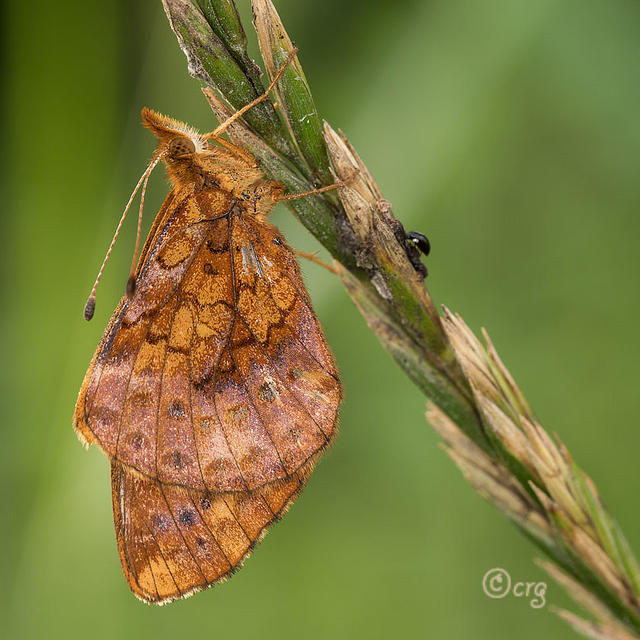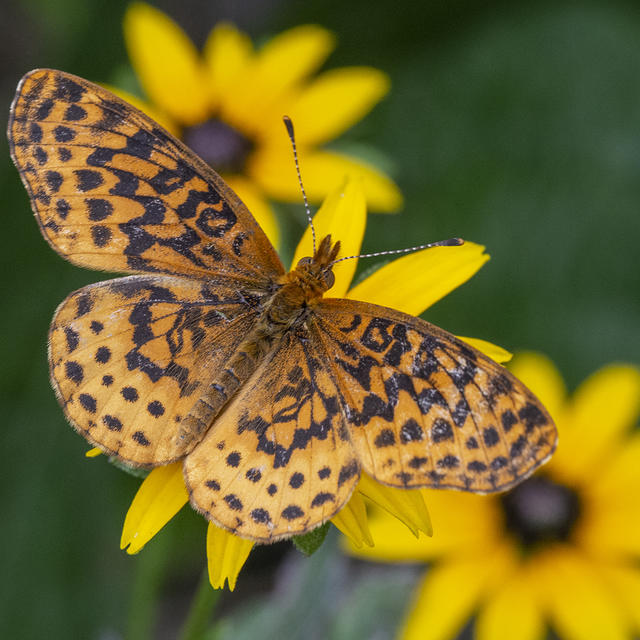Meadow Fritillary
Boloria bellona (Fabricius, 1775)
Family: Nymphalidae
Subfamily: Heliconiinae
Identification: Forewing squared off below tip. Upperside orange-red with heavy black markings. Underside of hindwing patterned with orange and purple-brown; off-white basal patch and metallic silver spots lacking.
Wing Span: 1 3/8 - 2 inches (3.5 - 5.1 cm).
Life History: Males patrol meadows with a low flight, during warm daytime hours. Females lay eggs on twigs and plants other than the host violets. Caterpillars feed on violet leaves and hibernate when in the third to fourth stage of development.
Flight: Two to three broods from late April to mid-October.
Caterpillar Hosts: Violets including northern white violet (Viola pallens) and woolly blue violet (V. sororia).
Adult Food: Favorite nectar sources are composites, including black-eyed susans, dandelions, and ox-eyed daisy. Plants from other families, such as verbena and dogbane, are visited less often.
Habitat: Usually wet places marshes, wet aspen groves.
Range: Eastern British Columbia east through southern Canada and northern United States to Newfoundland; south to northcentral Oregon, central Colorado, northeast Tennessee, and northwest North Carolina. Due to its adaptability to disturbed habitats, the butterfly is expanding its range southward from the southeastern states.
Conservation: Not usually of conservation concern.
NCGR: G5 - Demonstrably secure globally, though it may be quite rare in parts of its range, especially at the periphery.
Management Needs: None reported.
Comments: NULL
Alternate Scientific Names:
Clossiana bellona
Get your BAMONA Gear!
Please donate!
We depend on donations to keep Butterflies and Moths of North America freely available. We want to express our gratitude to all who showed their support by making a contribution this year. You can donate to support this project at any time.
Advertise with us!
Do you have a product or service that you think would interest BAMONA users? If you would like to advertise on this website, contact us by email, or use the contact form and select the "Advertising" category.
Verified Sightings
Displaying 1 - 24 of 1988 verified sightings

Observation date: Jul 06, 2023
Submitted by: terrymortier
Region: Dunn County, Wisconsin, United States
Verified by: jmgesell
Verified date: Mar 22, 2024
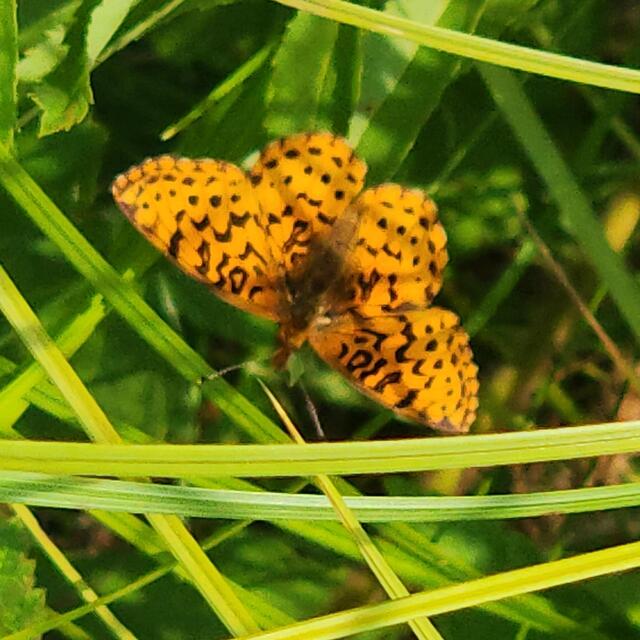
Observation date: Jul 18, 2023
Submitted by: asand
Region: Iron County, Michigan, United States
Verified by: elsner
Verified date: Jan 17, 2024

Observation date: Jul 08, 2023
Submitted by: billmaciejko
Region: Manitoba, Canada
Verified by: chalicerae
Verified date: Jan 04, 2024

Observation date: Nov 17, 2023
Submitted by: Sunny Grove Farm
Region: Meigs County, Ohio, United States
Verified by: rogerdowner
Verified date: Nov 19, 2023

Observation date: Oct 12, 2023
Submitted by: marllo
Region: Clark County, Ohio, United States
Verified by: rogerdowner
Verified date: Oct 14, 2023

Observation date: Oct 02, 2023
Submitted by: Jorie
Region: Fayette County, Kentucky, United States
Verified by: CA Ivy
Verified date: Oct 08, 2023
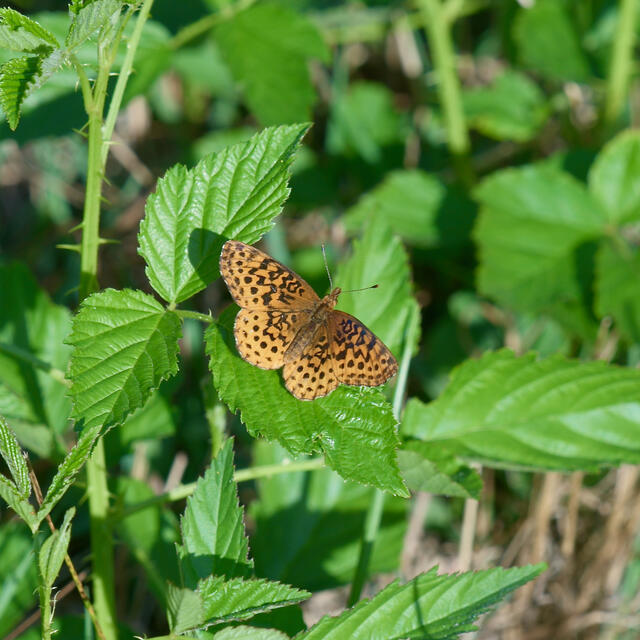
Observation date: Sep 25, 2023
Submitted by: ELFredrickson
Region: Madison County, Kentucky, United States
Verified by: CA Ivy
Verified date: Sep 28, 2023

Observation date: Sep 09, 2023
Submitted by: Sue Bocchicchio
Region: Centre County, Pennsylvania, United States
Verified by: davidwright
Verified date: Sep 11, 2023

Observation date: Aug 27, 2023
Submitted by: Sue Bocchicchio
Region: Centre County, Pennsylvania, United States
Verified by: davidwright
Verified date: Aug 31, 2023

Observation date: Jul 09, 2023
Submitted by: Gillian Richards
Region: Manitoba, Canada
Verified by: chalicerae
Verified date: Aug 31, 2023

Observation date: Aug 26, 2023
Submitted by: Sue Bocchicchio
Region: Centre County, Pennsylvania, United States
Verified by: davidwright
Verified date: Aug 26, 2023
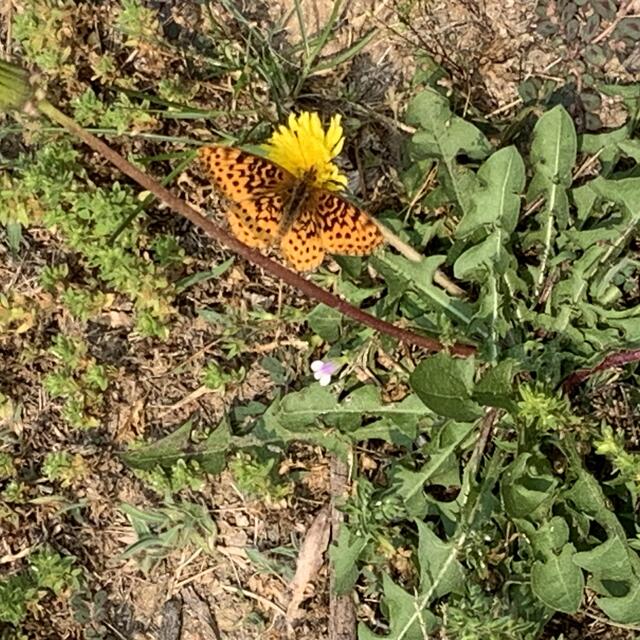
Observation date: Jun 09, 2023
Submitted by: ships333
Region: Chester County, Pennsylvania, United States
Verified by: davidwright
Verified date: Aug 20, 2023
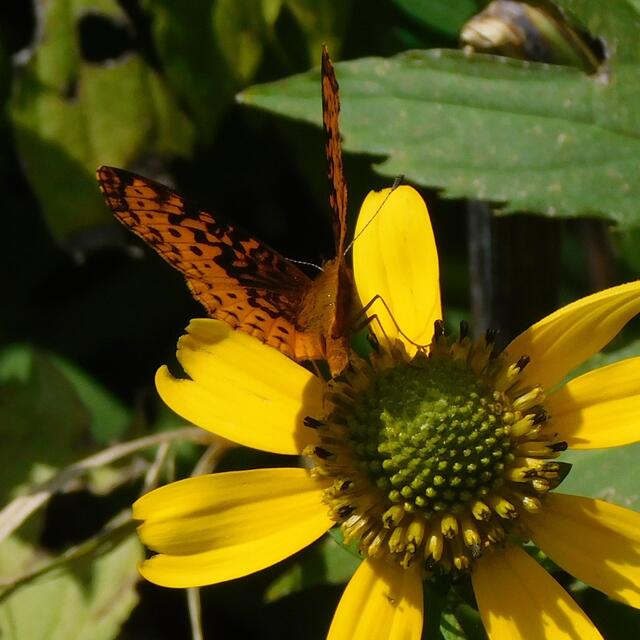
Observation date: Jul 30, 2023
Submitted by: Sue Bocchicchio
Region: Centre County, Pennsylvania, United States
Verified by: davidwright
Verified date: Aug 01, 2023

Observation date: Jul 05, 2023
Submitted by: Tom Dudones
Region: Essex County, New York, United States
Verified by: jmgesell
Verified date: Jul 07, 2023

Observation date: Jul 05, 2023
Submitted by: Tom Dudones
Region: Essex County, New York, United States
Verified by: jmgesell
Verified date: Jul 07, 2023

Observation date: Jul 03, 2023
Submitted by: dlister
Region: Berkshire County, Massachusetts, United States
Verified by: jwileyrains
Verified date: Jul 04, 2023

Observation date: Jun 29, 2023
Submitted by: Pheasantboy77
Region: Lincoln County, Minnesota, United States
Verified by: jmgesell
Verified date: Jul 01, 2023

Observation date: Jun 24, 2023
Submitted by: Eric Hartshaw
Region: Lycoming County, Pennsylvania, United States
Verified by: davidwright
Verified date: Jun 28, 2023

Observation date: Jun 10, 2023
Submitted by: drmarc60223
Region: Grant County, Wisconsin, United States
Verified by: jmgesell
Verified date: Jun 11, 2023

Observation date: May 23, 2023
Submitted by: Bob Jacobson
Region: Chippewa County, Wisconsin, United States
Verified by: jmgesell
Verified date: May 23, 2023

Observation date: May 08, 2023
Submitted by: Sue Bocchicchio
Region: Centre County, Pennsylvania, United States
Verified by: davidwright
Verified date: May 12, 2023

Observation date: May 07, 2023
Submitted by: KABerry
Region: Butler County, Pennsylvania, United States
Verified by: davidwright
Verified date: May 09, 2023

Observation date: Apr 25, 2023
Submitted by: Eric Hartshaw
Region: Lycoming County, Pennsylvania, United States
Verified by: davidwright
Verified date: Apr 27, 2023

Observation date: Aug 25, 2022
Submitted by: hockeybruce7
Region: Monroe County, Pennsylvania, United States
Verified by: davidwright
Verified date: Feb 04, 2023
- 1 of 83
- next ›

